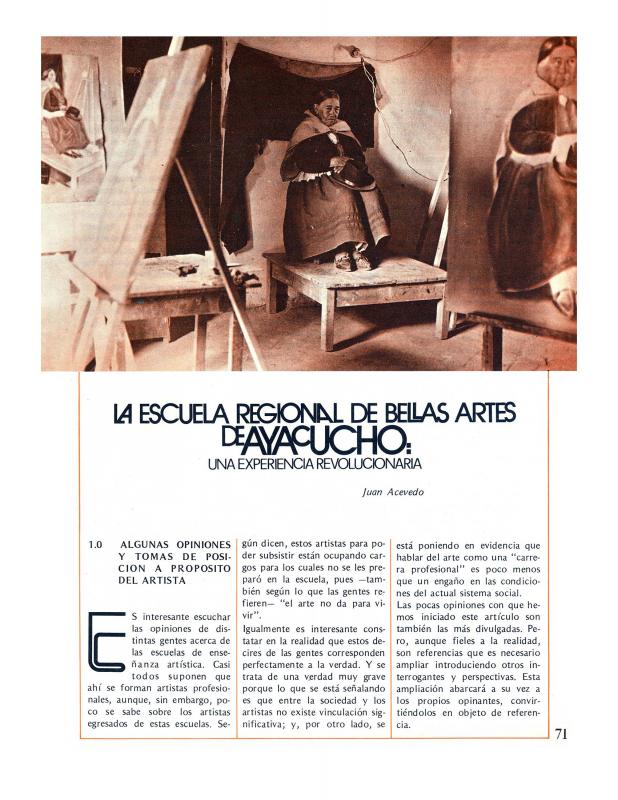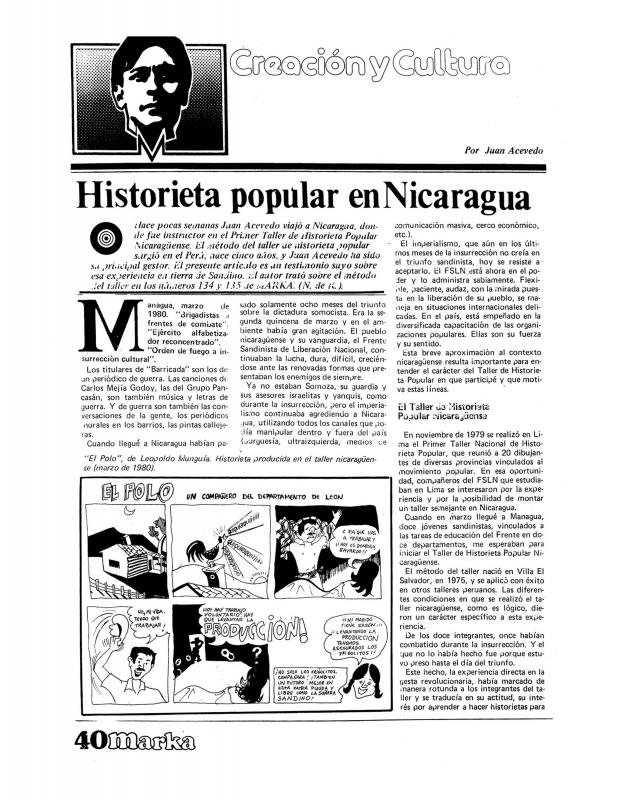In this text, Peruvian cartoonist and communications theorist Juan Acevedo (b. 1949) explains the importance of the cartoon and its methodology as a means of popular communication. This document is complemented by a text published one week later (“El Taller de Historieta Popular,” Marka, Nº 135, December 20, 1979, 4–5 [on that subject, see in the ICAA digital archive the homonymous text (doc. no. 1141933">1141933)].
Acevedo is now recognized as one of the greatest Peruvian cartoonists; his most well-known creation is El Cuy, a guinea pig character closely associated with Peruvian leftist culture. Through his graphic work and workshops in popular communication, Acevedo supported Velasquismo, the economic, social, and cultural policies enacted during the first phase of the so-called Gobierno Revolucionario de las Fuerzas Armadas under General Juan Velasco Alvarado (1968–75). In 1978, Para hacer historietas was published. That celebrated book was based on the workshops he gave in the province of Ayacucho (1974) and in the Lima neighborhood of Villa El Salvador (1975), a section of the city representative of urban struggle. Para hacer historietas has been republished a number of times and translated into different languages. It upholds the idea that to make cartoons it is not necessary to know how to draw; the systematized method has been applied to a number of different educational experiences in countries throughout Latin America.
[For further reading, see in the archive the following texts by Juan Acevedo: “El taller de historieta popular” (doc. no. 1141933">1141933); “La Escuela Regional de Bellas Artes de Ayacucho: una experiencia revolucionaria” (doc. no. 1139339); and “Historieta popular en Nicaragua” (doc. no. 1139355)].



